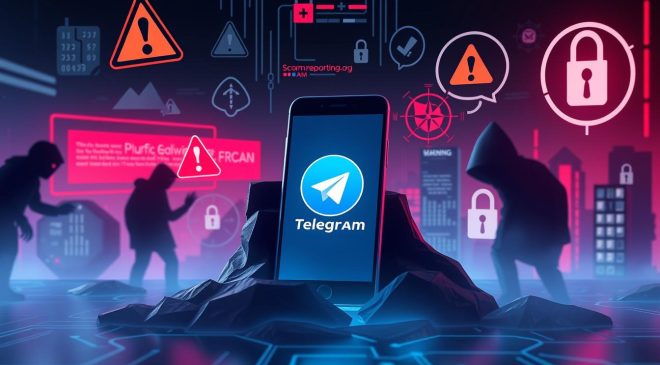
Scams are ubiquitous in the digital age, and they come in all shapes and sizes. Whether it’s a phishing email, mobile text message, or fake website, scammers are constantly devising new ways to obtain your personal information. But how do they manage to get their hands on your data? Understanding the tactics they employ is the first step in protecting yourself from identity theft and financial fraud.
Key Takeaways
- Scammers use a variety of tactics to trick individuals into providing their personal information or money.
- Phishing, smishing, malware, social engineering, data breaches, and fake websites are common strategies employed by scammers.
- Public Wi-Fi networks can be a gateway for data theft, and individuals must take measures to protect their information when using these networks.
- Being aware of the risks and using caution when conducting online activities can help prevent falling victim to scams.
- Regularly monitoring bank and credit card statements can help detect and prevent fraudulent activity.
What Is a Scam?
Before diving into the mechanics of how scammers obtain your information, it’s essential to understand what a scam is. A scam is a fraudulent scheme or deceptive act that aims to trick individuals into providing sensitive information or parting with their money under false pretenses. These schemes can take on various forms, including:
- Phishing scams
- Online shopping scams
- Lottery scams
- Charity scams
- Investment scams
- Romance scams
Scammers often use a sense of urgency or fear-mongering to pressure individuals into making hasty decisions without thinking them through. They prey on human vulnerabilities and emotions, often exploiting the elderly or those who are less tech-savvy.
It’s essential to be aware of the various types of scams out there and know how to spot them. Being vigilant and cautious can go a long way in protecting yourself and your personal information from falling into the wrong hands.
Phishing: The Art of Deception
Phishing scams are a prevalent tactic used by scammers to obtain personal information.
These scams typically involve sending emails or messages that appear to be from a legitimate source, such as a bank or retail company. The messages often contain urgent requests to update account information or verify passwords and may even threaten account closure if action is not taken immediately.
However, these messages are deceptive and aim to trick you into divulging sensitive information. The links provided in the messages usually direct you to fake websites that look similar to the legitimate source but are designed to steal your information.
Phishing can also occur through phone calls or text messages, known as vishing and smishing respectively. These methods may use similar tactics, such as urgent requests or false rewards to trick you into sharing your information.
How to Avoid Falling for Phishing Scams
There are several actions you can take to protect yourself from phishing scams:
- Be wary of unsolicited messages requesting personal information and verify the source before responding.
- Do not click on links in suspicious messages, especially those with urgent or threatening language.
- Avoid providing personal information over the phone unless you initiated the call and are sure of the recipient’s identity.
- Ensure that your devices and applications have the latest security updates and use anti-malware software.
By staying vigilant and following these tips, you can help protect yourself from falling victim to phishing scams and ensure the safety of your personal information.
Smishing: The Mobile Menace
As smartphones continue to dominate our daily lives, scammers are finding new ways to exploit mobile users. One of the most common tactics in the mobile world is smishing, a form of phishing that utilizes text messages or SMS to deceive users.
Smishing messages often appear to be from a trustworthy source, such as a bank or retailer, and persuade you to take an immediate action, like clicking on a link or providing personal information. However, the link or message attachment is malicious and could install malware on your device, or direct you to a fake website designed to steal your data.
One example of smishing that gained notoriety was the SMS scam where users were promised a free Disney+ subscription if they clicked on the enclosed link. The link took users to a fake Disney+ website where they were asked to provide their credit card details. However, the website was designed to steal user data and credit card information.
| Protect Yourself from Smishing |
|---|
| Be wary of text messages from unknown sources: If you receive a text message from a number you don’t recognize, don’t click on any links or open any attachments. Delete the message immediately. |
| Be suspicious of urgent or alarming messages: Scammers often use urgent language to create a sense of panic and persuade you to act quickly. Think twice before responding to any SMS that urges immediate action. |
| Verify the source of the message: If the message appears to be from a legitimate source, such as your bank, call the company directly to confirm the request. Don’t use the phone number included in the message, as it could be fake. |
| Protect your device: Ensure that your device has the latest software updates and security patches. Consider installing anti-malware software to protect against smishing and other threats. |
By taking these precautions, you can reduce the risk of falling victim to smishing attacks and protect your personal information from being accessed by scammers.
Malware: The Silent Invader
Malware is a type of software created with malicious intent to disrupt, damage, or gain unauthorized access to a computer system or network. Malware can take many forms, including viruses, worms, Trojans, ransomware, and spyware. It’s a powerful tool for scammers to collect information from the infected devices, leading to data breaches with devastating consequences.
Malware is distributed through several means, including email attachments, infected software downloads, and malicious links. Once it infects your device, malware can monitor your activity, log keystrokes, steal personal and financial information, and compromise your entire system.
According to a report by the Ponemon Institute, data breaches caused by malware cost an average of $9.2 million per incident in the United States alone in 2020.
Types of Malware Used for Data Breaches
There are several types of malware used by scammers to breach data, including:
| Malware Type | Description |
|---|---|
| Keyloggers | Records keystrokes to capture login credentials and other sensitive information entered on a device. |
| Ransomware | Locks you out of your device or network until a ransom is paid. Scammers often threaten to publish or sell your data if you refuse to pay. |
| Backdoors | Provides unauthorized access to a device or network, allowing scammers to steal sensitive information or use the device for criminal activities. |
| Trojans | Appears as a legitimate software but contains malicious code to compromise your system. |
In addition to the financial costs, malware can also cause reputational damage, loss of customer trust, and legal consequences. Protecting your devices with reputable antivirus software, regularly updating your software and operating system, and being cautious when opening unknown emails or downloading software can help prevent malware infection and avoid data breaches.

Social Engineering: Manipulating Trust
Scammers use a variety of techniques to manipulate individuals into revealing sensitive information. Social engineering is one such tactic that involves exploiting the human tendency to trust others.
“Social engineering refers to the art of manipulating people to divulge confidential information.”
Scammers may pose as someone you know or as a representative from a trustworthy source to gain your confidence. They may send you emails or messages, asking for your personal information or tricking you into clicking on a link that installs malware onto your device.
One common form of social engineering is pretexting, where the scammer creates a fictitious scenario to gather information. For instance, a scammer pretending to be a bank representative may call you and ask for your account details to “verify” your identity.
To avoid falling prey to social engineering, be wary of unsolicited requests for personal information. Verify the identity of the sender or caller before sharing any information. Watch out for red flags like urgent requests, threatening language, or offers that seem too good to be true.
Examples of Social Engineering Tactics:
| Social Engineering Tactic | Description |
|---|---|
| Phishing | Scammers use fake emails or messages to trick individuals into revealing their personal information. |
| Pretexting | Scammers create a fictitious scenario to extract sensitive information from individuals. For example, impersonating a bank representative to gain access to bank account details. |
| Baiting | Scammers offer tempting bait such as free merchandise or fake job offers to lure victims into sharing personal information. |
| Tailgating | Scammers follow an authorized individual into a restricted area, relying on the person’s politeness and lack of suspicion to gain access. |

Data Breaches: A Treasure Trove for Scammers
Data breaches are a gold mine for scammers, providing them with access to a wealth of personal information that can be exploited for financial gain. In fact, according to a recent study, data breaches exposed a staggering 36 billion records worldwide in the first half of 2020 alone, with an average cost of $3.86 million per breach.
The stolen data can include sensitive information such as names, addresses, social security numbers, credit card details, and even medical records. Scammers can use this information to carry out identity theft, fraud, and other criminal activities.
The Aftermath of Data Breaches
Once a data breach occurs, scammers use sophisticated tools and techniques to analyze and exploit the stolen data. They may use social engineering tactics to target victims with phishing emails or phone calls that appear legitimate, tricking them into providing additional sensitive information or payment details. They can also deploy malware to gain backdoor access to victims’ devices or networks and carry out further attacks.
Even after the initial breach, scammers can continue to use the stolen data for months or even years, leading to long-term identity theft and financial loss for victims. This highlights the importance of regularly monitoring your financial accounts, credit reports, and other online activities for any unusual or suspicious activity.
Preventing Data Breaches
While data breaches are often outside of our control, there are steps you can take to minimize the risk of your data being stolen. These include:
- Using strong, unique passwords for each of your online accounts and enabling two-factor authentication wherever possible. This can make it more difficult for scammers to access your data, even if they manage to obtain your login credentials.
- Regularly updating your devices and software with the latest security patches and versions. This can help to address any vulnerabilities that scammers may try to exploit.
- Being cautious about sharing your personal information online and avoiding clicking on suspicious links or downloading attachments from unknown sources.
By taking these precautions, you can reduce your risk of falling victim to data breaches and ensure that your personal information remains safe and secure.

Public Wi-Fi: A Gateway for Data Theft
While convenient, public Wi-Fi can be a gateway for cybercriminals to steal your data. Hackers can intercept data transmitted over public Wi-Fi and gain access to your personal information, including usernames, passwords, and credit card numbers.
To protect yourself from data theft when using public Wi-Fi, avoid accessing sensitive information such as online banking or entering credit card information. If you must use public Wi-Fi, consider using a virtual private network (VPN) to encrypt your internet traffic and prevent hackers from intercepting your data.
Safe Public Wi-Fi Practices
- Never enter sensitive information such as passwords, credit card numbers, or social security numbers over public Wi-Fi
- Use a VPN to encrypt your internet traffic
- Only connect to trusted and secure public Wi-Fi networks
- Disable automatic Wi-Fi connections on your device
- Keep your device’s software up-to-date to ensure it has the latest security patches
By following these safe public Wi-Fi practices, you can protect your personal information from cybercriminals and prevent data theft. Stay vigilant and remember that when it comes to public Wi-Fi, it’s better to be safe than sorry.

Stay safe while shopping online by keeping these tips in mind. Don’t fall victim to online shopping scams and avoid sharing your personal information with anyone you don’t trust.
Dumpster Diving: Analog Data Theft
Information doesn’t just exist in cyberspace, physical documents and discarded storage devices can also contain valuable data. This is where dumpster diving comes in. Scammers looking for personal information may sift through your garbage to find documents containing sensitive details or discarded devices that haven’t been properly wiped.
What Can Be Found in Your Trash?
Scammers can collect a wide range of information from your trash, including:
- Bank and credit card statements
- Medical and insurance records
- Expired passports or driver’s licenses
- Discarded hard drives or USB drives
- Personal letters or notes
All of these items can be used to steal your identity or compromise your accounts, making it crucial to properly dispose of sensitive documents and electronics.
Protecting Yourself from Analog Data Theft
To safeguard your personal information from dumpster diving scammers:
- Shred or destroy any documents that contain sensitive information
- Use hard drive wiping software or physically destroy old storage devices before disposal
- Consider investing in a shredder or using a shredding service
- Bring electronics to a specialized e-waste recycling center instead of throwing them in the trash
- Be mindful of what you throw away, even seemingly insignificant items can contain personal information
By taking the necessary precautions to properly dispose of your sensitive information, you can greatly reduce the risk of falling victim to analog data theft.
FAQ
How do scams get your information?
Scammers employ various tactics to obtain personal information, such as phishing emails, fake websites, malware, social engineering, and data breaches.
What is a scam?
A scam is a fraudulent scheme or deceptive act designed to trick individuals into providing sensitive information or parting with their money under false pretenses.
What is phishing?
Phishing is a common tactic used by scammers to acquire personal information. They deceive individuals through fake emails and websites, tricking them into sharing sensitive details.
What is smishing?
Smishing is a form of scam that targets mobile users through text messages or SMS. Scammers use this technique to lure victims into revealing their personal information.
How does malware contribute to data breaches?
Malware infiltrates devices, steals data, and facilitates large-scale data breaches, allowing scammers to obtain valuable information.
What is social engineering?
Social engineering is the manipulation of trust to exploit individuals into sharing personal information. Scammers use psychological tactics to deceive and gain access to sensitive data.
How do scammers utilize data breaches?
Scammers capitalize on data breaches to launch targeted attacks and gain access to valuable personal information obtained from compromised databases.
What are the risks of using public Wi-Fi?
Public Wi-Fi networks can be vulnerable to data interception by scammers. Using public Wi-Fi without proper security measures can put your personal information at risk.
How do scammers create fake websites and online shopping scams?
Scammers create fake websites and online shopping platforms to deceive users into sharing personal information or making fraudulent purchases. It’s important to be able to identify and avoid these scams.
What is dumpster diving?
Dumpster diving is a primitive method employed by scammers to search through discarded documents or physical materials for personal information. It is an analogue means of stealing information.


